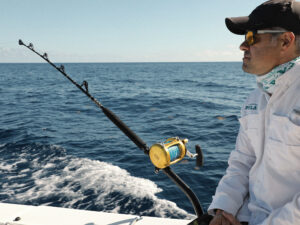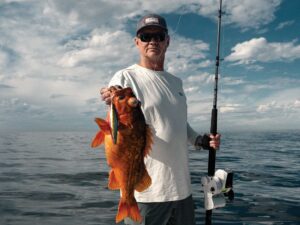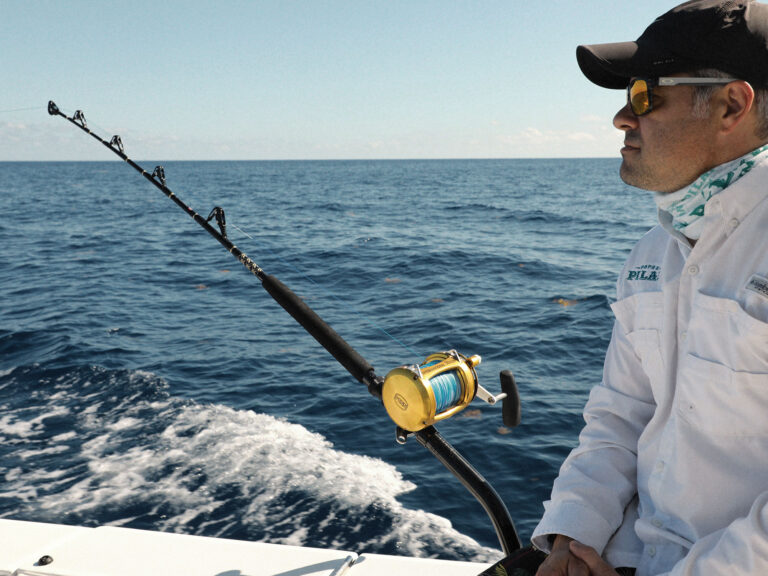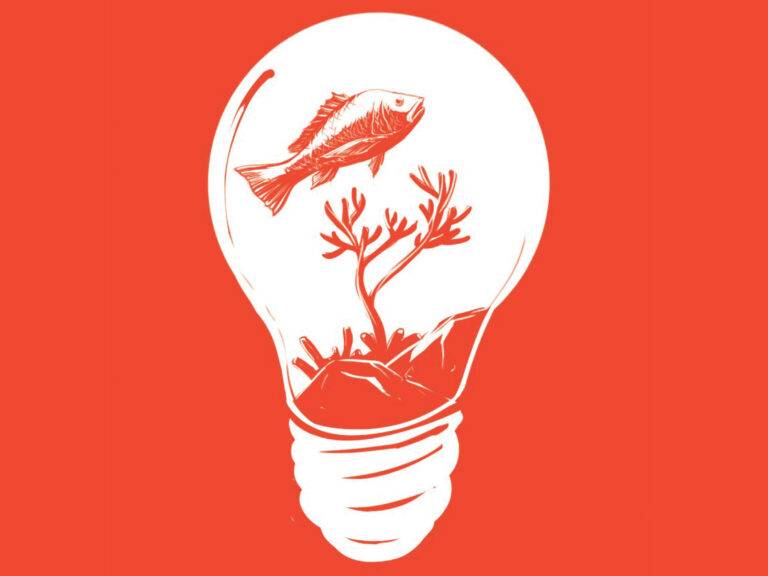
To be successful landing fish around structure, you must stack the deck in your favor. It’s not so much about fighting a fish to avert a break-off as it is understanding how gamefish interact with structure, and tailoring your approach and angling tactics accordingly. You still have to win the fight, of course—but why make it harder on yourself?
Below are five gamefish that are pure hell around structure. The following tactics apply to them and other species with similar fighting characteristics.
Snook
If possible, remain mobile when targeting snook around docks and bridges because anchoring limits your ability to quickly counter their moves. Trolling swimming plugs is deadly for pulling big snook out from under bridges and through inlets. But if you stop the boat upon hooking up, a big snook will take you to school, so maintain trolling speed until the fish is muscled away from pilings, groins, boulders and boat traffic. Once out in open water, slow or stop the boat and enjoy the fight.
When trolling along bridges, you generally find snook staged around up-current pilings. Turn the boat away from the bridge and into the current while advancing the throttle(s) as soon as you hook up. When trolling down-current sides, use the tide moving in sync with the boat to pull fish away from a bridge.
When pitching jigs or live baits near bridge spans, keep the boat lined up with the target area. Once hooked up, maneuver the boat to maintain a straight pull on a fish while easing into open water. Any deviation, and a fish can angle across a piling or into a groin.
A maneuver applicable in the backcountry and along dock-studded seawalls involves getting between a big snook and structure after hooking up. In the mangroves, a similar scenario often presents itself during low tides, with minimal water for a big fish to get underneath them. Use the pull from your rod to force the fish to run in the opposite direction and away from obstacles. I once scored a 30-pound snook on 8-pound spin tackle this way.
Grouper
Grouper will make you look foolish in a hurry. The king of the hole-ups, grouper are tough to get an angle on. So, probe the down-current sides when drifting above structure. Upon hooking a big one, keep it off balance and out of its lair by easing the boat down-current. Procrastination costs fish.
The magic distance when anchoring is close enough for any chum or other fishing activity to lure grouper from structure yet provide enough real estate to prevent a hooked one from returning to it.
If rocked up by a grouper, free-spool and strip off line. The objective: Fool the fish into thinking it’s free. Allow 10 or so minutes, rapidly come tight, and resume the fight. If still holed up, try longer wait cycles. Such snags are usually temporary sanctuaries; sooner or later, a grouper will bolt for its main home.
Off the Dry Tortugas with Daniel Delph, I once waited out a big black grouper hooked on 20-pound-class spin tackle. It rocked me up four separate times over a 90-minute span. I finally stuck the rod in a holder to help Delph land a fish, and my grouper finally succumbed to the drifting boat. It weighed 55 pounds!
Strumming the fishing line periodically also works, particularly when you’re using braid. Simply wind tight and strum the line as if it were a guitar. The vibrations sometime annoy the fish into making a run for it. If all else fails, maneuver the boat around the structure and pressure the fish from different angles. With some luck, you’ll hit it just right and score.

Amberjack
A big amberjack will power back into or across a wreck without an angler getting a single crank on it—they are that strong. On anchor, AJs will charge for deeper water and part the fishing line on the reef. Your best bet when targeting sizable jacks is avoiding this often-insurmountable predicament.
Amberjack generally stack above a wreck. Back up into the current and over the structure until the sonar marks fish. Stem the current and drop a bait. Upon hooking up, the boat operator must drive away from the wreck with a degree of haste in the direction that the current or tide is flowing. Pull the amberjack into open water, and the odds are now stacked in your favor.
Over shallower wrecks, amberjack can be teased to the surface with large, frisky live baits and by swishing a large hookless teaser. When they’re hot, lead them off the wreck and into open water. Present a bait or lure, hang on, and enjoy the fight.
When hooked, a big amberjack will charge for deep water. Secure a poly ball to the end of your anchor rode. Immediately dump the anchor line and motor on top of the fish as quickly as possible. As long as the fishing line remains relatively straight up and down, you can follow the fish off the reef and out into open water without the threat of the line chafing on the bottom.

Wreck Permit
You thought the flats were the only place to target permit? Big permit love racing across wrecks, navigational aids, crab floats and even under other boats. In open water, they’ll rub their mouths on bottom to rid a hook.
Based on the tidal stage, permit make large circles around a wreck or hunt along its down-current sides. Anchoring requires a bit of geometry. For example, Harry Vernon III and I fished for permit at a shallow Bahamas Bank wreck. The tide was ripping. Rather than anchor down-current and cast back up and beyond the fish, which were tight on the wreck, I anchored 50 feet off to its side and marginally down-current of it.
My reasoning: Instead of hooking a permit directly behind us and tight on the wreck, where it could easily fray the line, I’d first pressure it away from the side of the obstruction. Once clear, I’d count on the strong tide to help sweep the fish well down-current of the wreck. The tactic worked beautifully, and we released eight permit in short order.
In open water and if mobile, tuck in behind a hooked permit to avoid navigational aids or crab floats. If a fish successfully reaches one, go into free-spool. Try repositioning the boat to reacquire a straight line on the fish. If that’s not possible, ease up to the obstacle and try unfurling the line around it. It’s surprisingly effective.
Tarpon
When it appears a tarpon will reach a dock, marina or bridge span, go into free-spool. At this stage, it’s the only shot at saving the fish.
Similar to fighting a permit, snook or any other large fish in this situation, try following the line around any obstacles. Get straight to the fish before coming tight. Sometimes it’s as easy as clearing one piling; other times it’s a lot more challenging, especially with a larger boat. Remember there will be times you just can’t escape the web weaved by the tarpon, and a break-off is necessary.
Again, the best prevention is to avoid getting into these situations in the first place. For instance, when hooking a tarpon around a pass or inlet, keep right on top of the fish. That’s because it could run deep off the shelf and fray the line if you remain shallow. You’ll also be more in control, allowing you to steer around other boats, docks, pilings, navigational aids and buoys.
At anchor and if the fish is large, toss a float and remain tight to it. The farther one gets, the more stress on the line and threats it might encounter.
In tight confines such as mangrove-lined shores, marinas or seawalls, maneuver the boat between these threats and the fish. Once again, the pressure should force a fish in the opposite direction of the boat and away from trouble.









